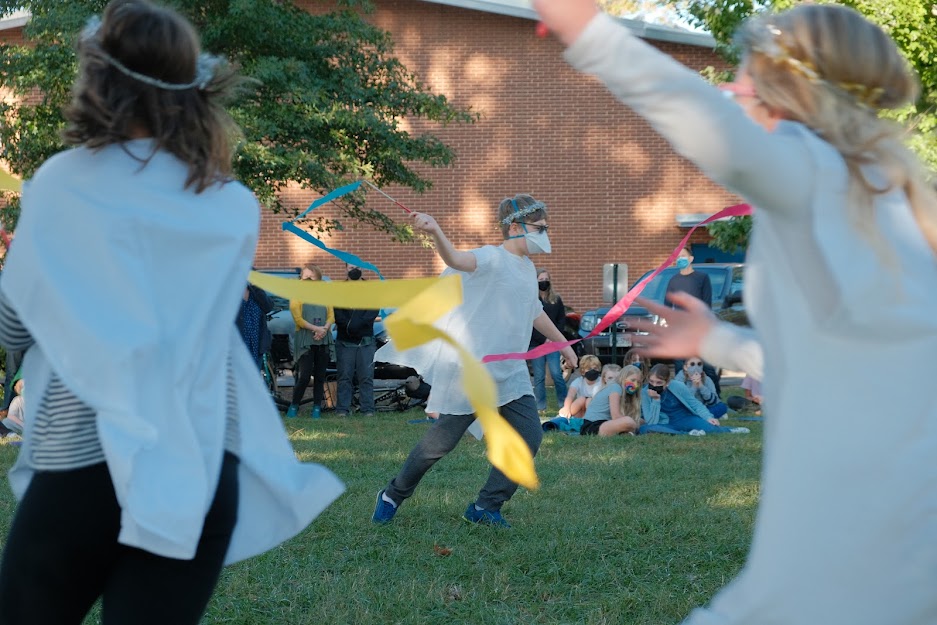To Solve the Environmental Crisis, We Must Foster the Power to Imagine

By Peter Sutoris on
Toward the end of my senior year at Dartmouth, I watched my peers line up in front of the Career Services building. Waiting for their interviews for corporate jobs, all seemed to be dressed the same—the men wearing navy jackets, the women dark dresses. I thought back to my first day on campus four years earlier when we all wore different colors and dreamed of different futures. It was as if our education, instead of enhancing our individualities and imaginations, had reduced them to sameness.
It was not a unique scene. All over the world, formal education supplies the economy with workers who will increase productivity. Its purpose is to fuel the economic machine rather than to alter its inner workings. But this machine now threatens our very survival. If the entire world reaches the levels of consumption seen in high-income countries today, we’ll need multiple planet Earths to supply the resources. The absurd idea of infinite growth within a finite territory is at the heart of our economic system.
To keep this machine running, formal education generates ever more efficient “human capital.” Increasing productivity metrics—such as revenue per employee or return on investment—rather than the individuality of students, drive our civilization’s approach to schooling our young people. Whereas the Sustainable Development Goals call for turning education into a force for sustainability, the opposite is often true: the ways Western societies have come to think about education undermine our ability to deal with the environmental crisis. To get through this crisis, we need to cultivate our imagination, not undermine it.
Growing up, none of my schooling fostered my ability to imagine a world different from what I saw around me. As a child in 1990s Slovakia, I had to memorize textbooks word by word. Decades later, as an education researcher, I see children elsewhere going through the same—a chorus of Indian pupils repeating the sentences written by their teacher on the blackboard, a South African child yelled at by the teacher for failing to reproduce exactly the content of the textbook. Rote learning, discouraging individuality and instilling docility in children are still at the root of what it means to be educated across much of the world.
Many experts agree that we need to move away from such approaches to education. But the suppression of children’s imagination doesn’t take place only in underresourced communities or outmoded education systems. The issue is obscured but even more pernicious in “elite” institutions that tout “critical thinking.” Save for a few wise mentors, hardly anyone encouraged me to imagine an alternative future for the world throughout my Ivy League undergraduate years and my Oxbridge graduate years. These institutions want to see their graduates succeed, and success is too often about maintaining current structures—not about reimagining their foundations.
In recent years, we have witnessed efforts towards standardizing curricula across the globe. Such reforms bring Western notions of educational success to the rest of the world. Driven by the OECD’s standardized tests, which rank education systems, countries focus on improving quantifiable outcomes such as literacy and numeracy. Winning the competition for the most efficient educational system today means having the most efficient workforce and growing the national economy faster tomorrow.
Our standardized, metric-driven, “efficient” education systems essentially shape children in the image of artificial intelligence (AI). The perfect “worker,” AI continually improves its own productivity but doesn’t challenge the larger structures within which it operates. It is one of the great paradoxes of our time that we invest so much into building supercomputers while marginalizing the imaginative potential of millions of human brains.
Our focus on technological solutions to our civilization’s challenges is driving our approach to education. More students at British universities are studying science, technology, engineering and mathematics (STEM) than ever before, including a 400 percent increase in enrollment in AI courses over the last 10 years. Compared to STEM, social sciences and humanities are often underfunded and seen as inferior by policy makers and the public alike. But this approach is counterproductive because non-STEM subjects are crucial to fostering our ability to reimagine the world.
We even put our hope in solving the environmental crisis on AI. We use machine learning to optimize energy networks, track land use through satellite imagery and predict extreme weather. But AI, like our other technologies, can only treat the symptoms of the environmental crisis, not the causes. These lie in our arrogance and lack of sensitivity to our impact on the planet. We can’t outsource to computers the solutions to the flaws in our politics and culture that underpin the environmental crisis.
Throughout history, achievers of great change have relied on their imaginations to address fundamental flaws in society. In my country of birth, Czechoslovakia, dissidents against Communism kept their dreams of democracy alive for decades by imagining different futures. In South Africa under apartheid, Nelson Mandela’s followers had to be radical in their imagination to create a vision of a fairer society. Imagining democracy when living under a totalitarian regime isn’t that different from imagining degrowth when living in a world of infinite growth.
The kind of intelligence Nelson Mandela and Václav Havel possessed was not artificial. The ability to reimagine the future and disrupt the status quo remains a distinctly human quality. Unlike AI, children are naturally imaginative and question the premises of society. In my research, I have observed that younger children are often the most radical in imagining different futures; as they get older, their imagination tends to become more generic, mimicking mainstream narratives of technological progress.
As long as our imagination is curtailed, ideas like degrowth or intergenerational justice remain fringe and sound utopian to many. Cultivating imagination means learning from history’s disrupters who made the allegedly impossible palatable. It means moving away from our standardized curricula, quantifiable metrics and authoritarian pedagogies. Instead of dismissing “childish” ideas about the world’s future, it means seeing inspiration in children’s imaginations.
In an education system that celebrates imagination, arts and creativity are as important as math and science. Teachers develop and act on their own pedagogical philosophies. Children define success for themselves. Idealism coexists with pragmatism. Expressing opinions and taking political action are goals of education, not distractions from it. Some of these ideas have already inspired educational projects around the world—such as forest schools in Europe, jeevanshalas (schools of life) in India or Schumacher College in the U.K.—but these are the exceptions.
The environmental crisis is not a crisis of technology or science, it is a crisis of imagination. If we let children be our guides, we might just be able to imagine our way to survival.
This is an opinion and analysis article; the views expressed by the author or authors are not necessarily those of Scientific American.
ABOUT THE AUTHOR(S)
Peter Sutoris is an environmental anthropologist based at SOAS University of London and the author of Visions of Development and Educating for the Anthropocene. More about his research can be found at www.petersutoris.com/. Twitter handle: @PSutoris.
At Richmond Waldorf School, we recognize that our student’s physical, social and emotional well-being are a key part of their ability to learn and thrive. Our holistic approach to education prioritizes critical thinking, communication, collaboration and creativity to prepare students for the challenges of the 21st century.
We are accepting applications for the 2022-2023 school year. Join an information session or meet with our Enrollment Administrator to learn more about Richmond Waldorf School.
Choosing a school is a very important decision in a family’s life. Our admissions process is designed to give you as much information as you need to make an informed decision about enrolling your children. Whenever possible, we encourage all families to book a visit when considering Richmond Waldorf School. We want to meet you! It is just as important for us to know who you are and what you are looking for in a school, as it is for you to know who we are and what Waldorf education is about.
Valerie Hogan
Enrollment & Marketing Administrator
admissions@richmondwaldorf.com | 804-377-8024 ext 3
